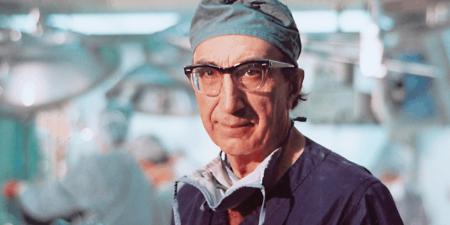Gustav Klimt (1862-1918), a Viennese painter, lived and worked during a period of enormous cultural, artistic, and scientific fecundity. His contemporaries included such luminaries as Sigmund Freud and the architect Otto Wagner. He founded the Art Nouveau Movement in Vienna, which started as an oppositional force, decrying the overly academic approach to art in the 19th century. Klimt is best known for his later works, which included richly decorative murals and portraits. The women in his paintings were often depicted in mythic settings, as, seen in the painting of Salome holding the head of John the Baptist. His many other portraits of women evoked strong images of eroticism, sexuality, and love.
The Kiss (1907-1908, 180 x 180 cm, Österreichisches Galerie Wien, Vienna) is perhaps Klimt's most popular and enduring work, evoking passion and intimacy through the use of vibrant colors. In the painting, only the couple's faces and arms are visible, and their embrace suggests the power of loving touch. The therapeutic benefits of touch are undeniable. Infants and young children benefit physiologically and emotionally from the loving touch of parents and caretakers. Studies have shown that the simple act of touching can lower blood pressure and help individuals deal better with pain [1-3].
"Laying on of hands" by physicians [4] and other healers has a long history and reflects the importance of touch in the healing process. One physician commented that despite the fact that nonessential touching was frowned on during her training, she would still hold an elderly patient's hand and put an arm around a worried pregnant teenager. As she said:
I always touch patients when they come to see me. I shake their hands in greeting, take a pulse on everyone, put a hand on a shoulder while auscultating lung fields. Although I don't usually initiate hugs, I'm happy to share one. ...Don't be afraid to touch your patients. They figuratively and literally put themselves into your hands. Handle them with care, but handle them. (Fugh-Berman A. Why you should touch your patients. Med Econ. December 13, 1993;70:91. No. 23.)
References
- Sellick SM, Zaza C. Critical review of 5 nonpharmacologic strategies for managing cancer pain. Cancer Prev Control. 1998;2(1):7-14.
- Whitcher SJ, Fisher JD. Multidimesional reaction to therapeutic touch in hospital setting. J Pers Soc Psychol. 1979;37(1):87-96.
- Cugelman A. Therapeutic touch: an extension of professional skills. J CANNT. 1998;8(3):30-32.
- Older J. Teaching touch at medical school. JAMA. 1984;252(7):931-933.



